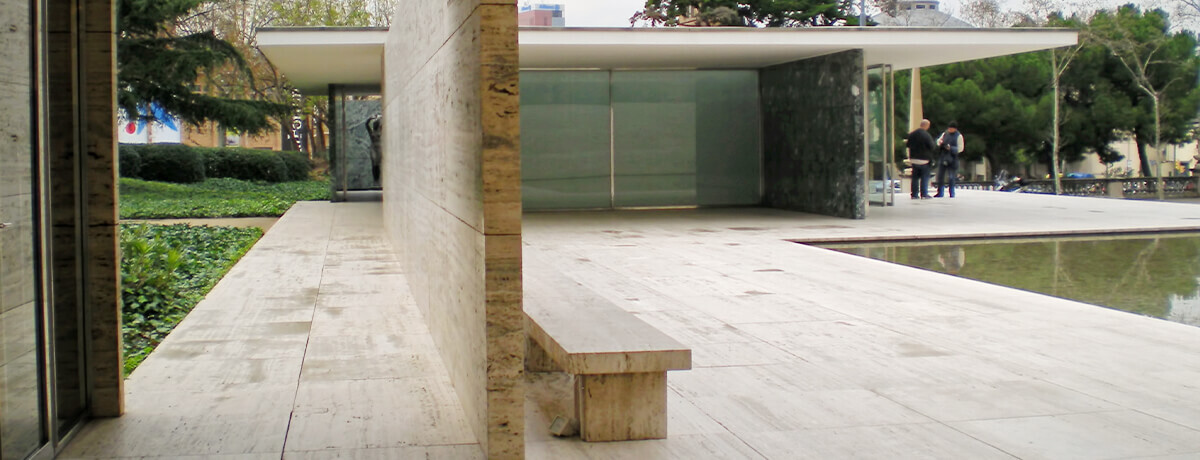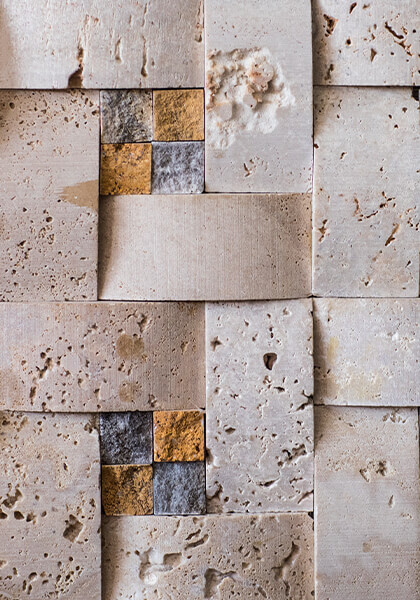What Finish Is the Perfect Fit for Your Project?
10th Nov 2021

Travertine is the ultimate choice for many homeowners, and with a good reason - a timeless, luxurious material that comes in a variety of colour, cut and surface-finish options.
And speaking of finishes, while researching the different travertine options, you might encounter terms like polished, honed, brushed, sand -blasted and more that might seem unfamiliar or confusing.
That's why, in this blog post, our travertine stone experts will explain the different types of finishes, not only to clear up what they are, but also in order to see which one is the perfect fit for your project. Keep reading.

Before purchasing
Before buying travertine for your home or business, you should take the time to learn more about it. Doing so will enable you to make an informed decision. Don’t worry, you don’t need to become an expert, but you should have a clear idea about those few things that are important when making your decision.
One of the most important decisions you should make is what finish you should choose. Let's explore the options.
Travertine finish comes in many forms.
Travertine might come in many finishes. The most common of those finishes are honed, tumbled, polished, rough and brushed. Saturnia Travertini Italia also offers split face, bush-hammered, sandblasted, and scratched finish. Let's take a look at the different finish options:
1) Rough - This finish (also called ‘Raw Cut’) is where no treatment is applied to the stone after it is cut into slabs on the gangsaws. This leaves the product with a very natural, raw stone feel. This finish is often used for exterior cladding and outdoor uses but can also be applied to interiors if you are looking for a particularly natural or rustic effect. Keep in mind that, as this finish is the simple cut from a diamond blade saw, this finish does not bring out the colours patterns of the stone like other finishes below.
2) Polished - This finish was in the past the most requested finish. It produces a high gloss, mirrored surface which reduces porosity whilst improving resistance. The stones are polished by repeated application of various treatments. The polished finish highlights the color and properties of the natural stone (just like when you polish your copperware it brings out all the colour and shine) and is commonly used in interiors, as well as benchtops, to bring out the majesty and luxury of a natural stone product. This finish can be used with both filled and unfilled travertine and it is one of the best finishes if you are considering using it in an area where cleaning is important.
You also have to consider that this finish is the least slip resistant and therefore not the best option if you are planning on using the stone in wet areas (swimming pool, bathroom floor). For these areas one of the options below would be better.
3) Honed - A honed finish is similar to polished in that the stone is perfectly smooth. However, as opposed to polished, honed gives the stone a matte look which has become increasingly popular on the market. It still showcases all the stone’s beauty, colour and patterns without the high gloss look. It is obtained by the process of grinding and sanding the product with the same technique as polished but not to the same degree. As a consequence, not only is the finish a matte finish but slip resistance is increased. Just like polished, this finish can be used with filled or unfilled travertine and cleaning is still very easy even though the material is slightly more open. This finish is used a lot for floor tiling, interior walls and cladding.
4) Brushed - As the name would have it, a brushed finish is achieved when metal brushes are utilized to remove the stone's softest particles on its upper layers. As opposed to polished/honed, the surface remains ever so slightly undulating, like an orange peel, and is the author’s favourite finish! Aesthetically, it adds warmth to the product and from a practical point-of-view, it increases slip resistance even more than honed. This finish is also known as an antique or leather finish as it gives the stone a suede, non-glossy look and feel. It too can be used with filled or unfilled travertine and is used a lot for floor tiling (both internally and externally) and is a good solution for wet areas where people walk barefoot, as the texture is smooth yet slip-resistant.
5) Tumbled - This finish gives the stone an antique, weather-worn look and feel, reminiscent of the classical palaces and country houses of European nobility. It is usually used with unfilled travertine giving the edge and the stone's natural holes a smooth, more rounded feel with no shine. This finish is achieved by tightly packing the product into a rubber-coated barrel with abrasive grit and putting it through a tumbling process. This rustic finish which gives the stone a lot of character is usually used for internal cladding and outdoor installations like French Pattern paving.
6) Sand Blasted - Like the name suggests, sand blasted gives the stone the effect of having a flat surface but with a rough texture making the stone highly slip resistant. This finish is obtained by running the stone through various mechanical applications which slightly chip the stone’s surface. As a consequence, the stone appears lighter in colour (no matter which colour variety you choose) and is slightly abrasive.
This finish is used mainly for outdoor flooring and pathways. It is not usually used with filled travertine as this chipping process also chips the filling but considering it is a light application it can also be used with filles stone, as long as the client understands this issue above. Many people choose this finish for high traffic areas which over time makes the stone’s finish look more tumbled/antique as it loses some of that lighter/whiter parts caused by the initial chipping.
7) Bush Hammered - This finish is similar to sand blasted but the process is heavier thus leaving small craters in the stone with the mechanical chipping process. This is the most slip resistant finish available but it is also the finish which shows the stone’s colours and patterns the least. It is not recommended for use where people walk barefoot as the finish creates tiny jagged lines. This finish is not suitable for filled travertine. It is just about exclusively used for high traffic external areas and more importantly, if it is a sloping area or steps. Like sand blasted the effect is worn down slightly over time.
8) Split faced - This finish is the most ‘natural’ of all the finishes which gives the stone a boulder or stone in nature look. The stone surface is not cut with diamond blade saws but split along the stone’s natural fault lines creating a highly uneven, rough stone look. However, the back of the piece is flat which makes split face travertine suitable for dramatic cladding. It can also be used for outdoor retaining walls, giving it the semblance of being a wall of travertine stones. The pieces are uneven and do not align perfectly, but this is part of the appeal of a very rough natural look. Obviously this finish cannot be used with filled travertine and the effect does not show the stone’s colours and veining as with other finishes.
Now that you are aware of the different finish options you have, you might wonder which one you should choose. Truth to be told, each travertine looks gorgeous and adds a luxurious note to your space. So the best travertine is the one that fits your space, taste, and budget. The things to keep in mind are where you plan on using it and therefore if cleaning or slip-resistance is important and then obviously, the aesthetics of the different finishes.
For more information on the different travertine and finish options we offer, you can visit us here. And as usual, if you have any questions, just let us know, we are more than happy to put all of our experience at your disposal.

